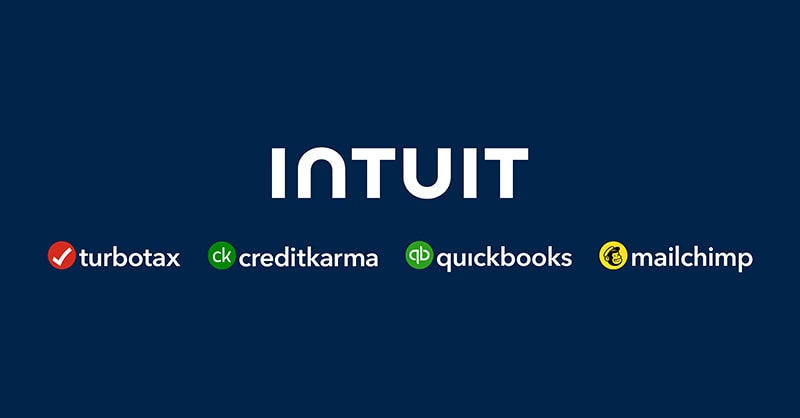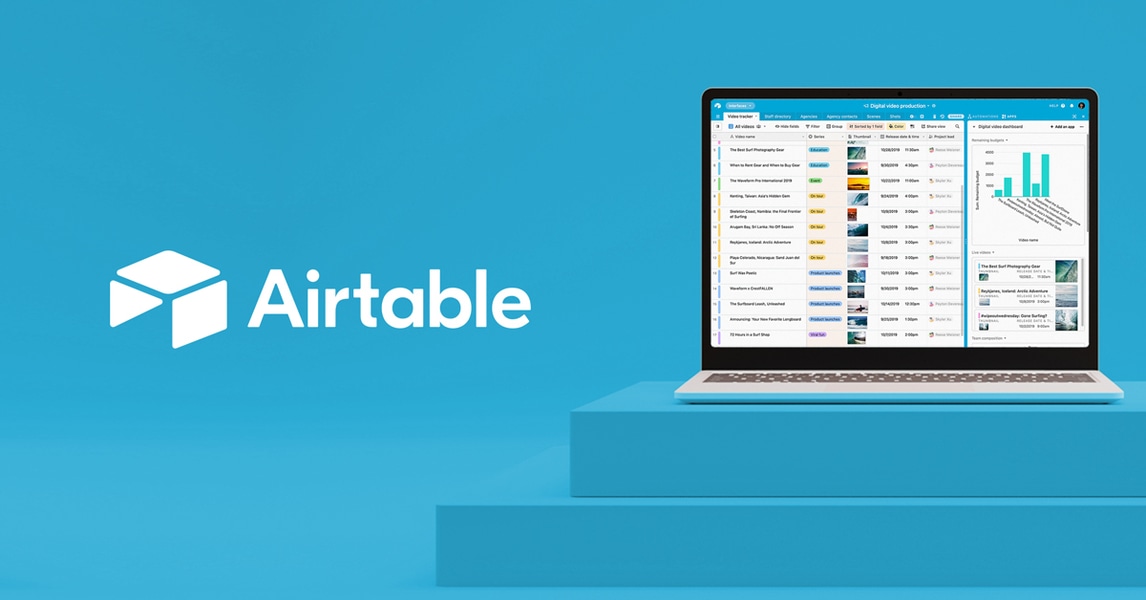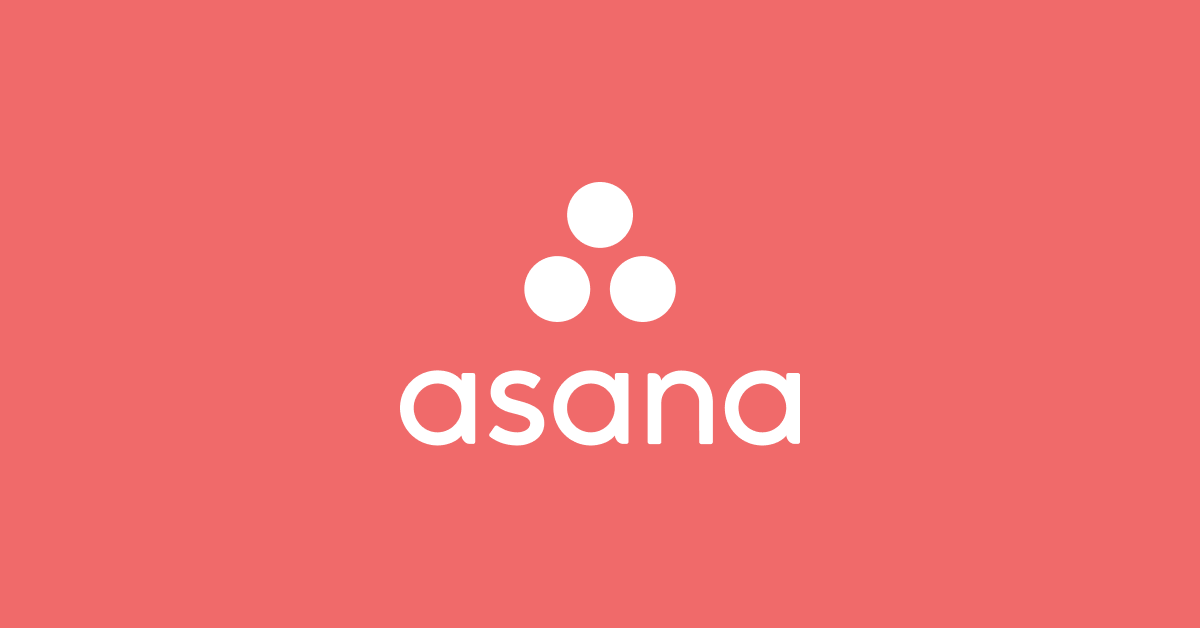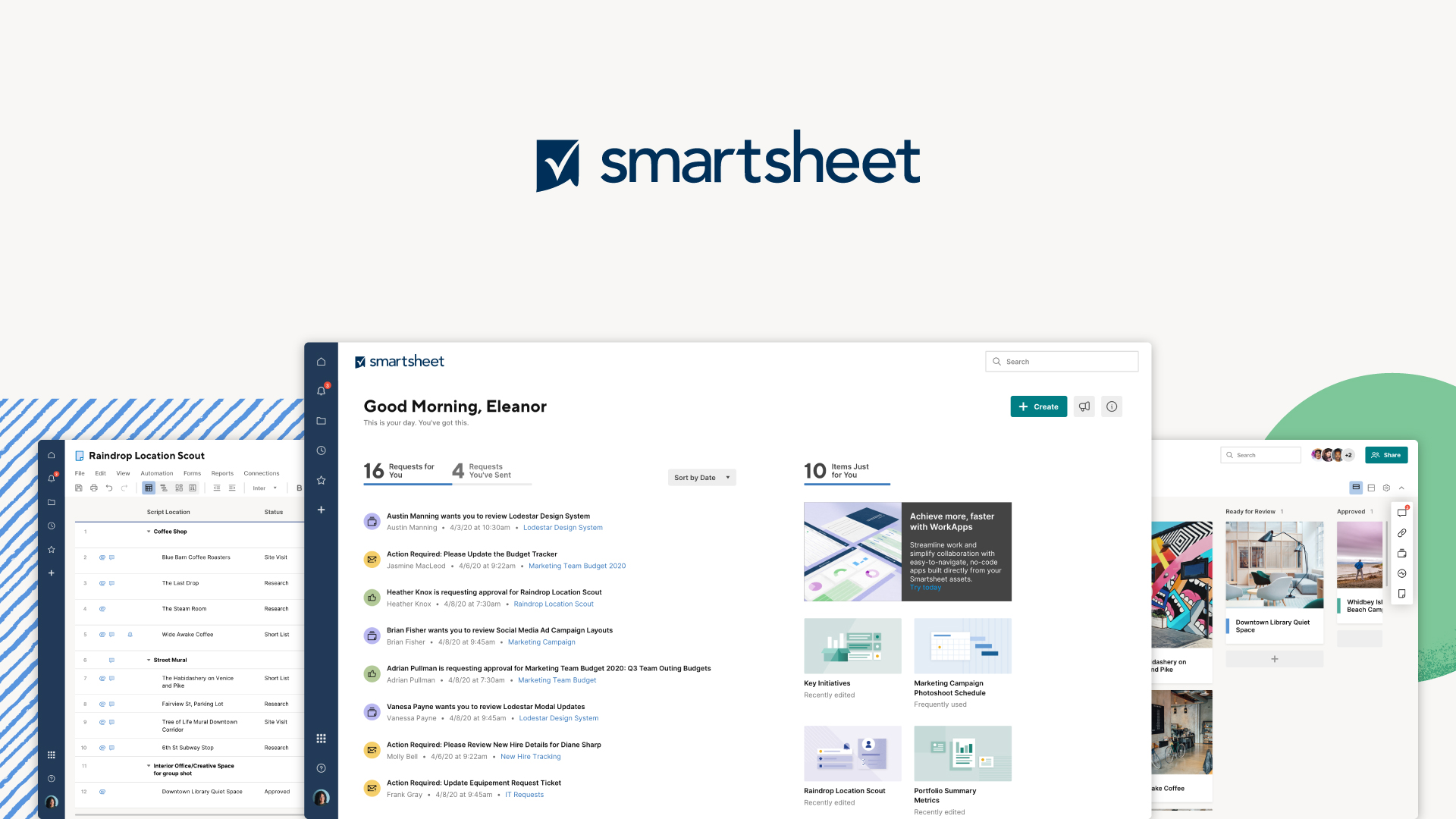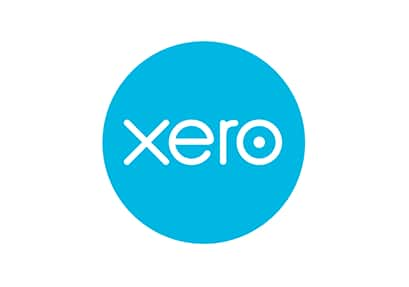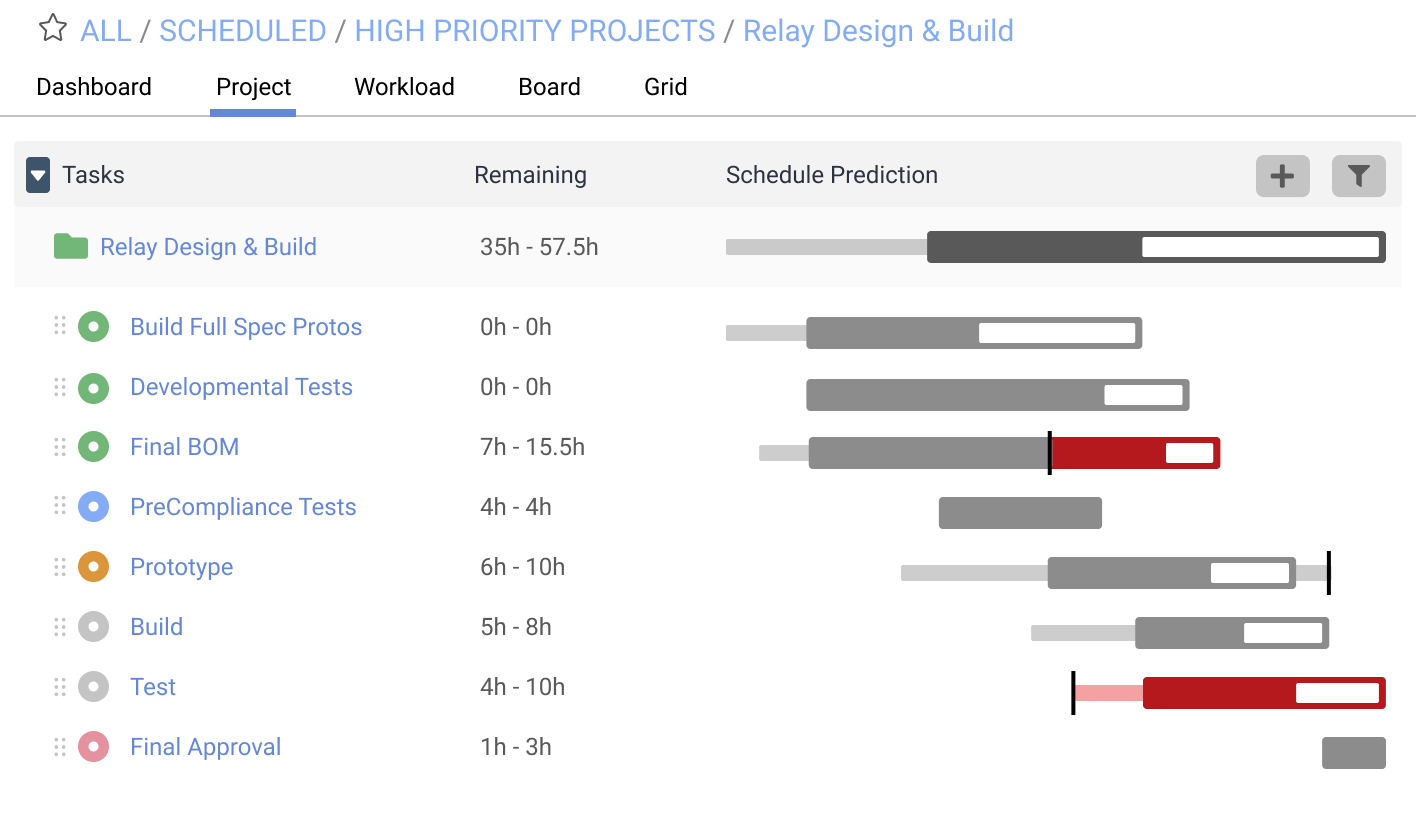Introduction
As companies grow, it becomes increasingly important to have effective systems and tools in place to manage workflows, projects and resources. Business management software helps align teams, track progress and keep everyone focused on the most important work. This blog evaluates 15 top options based on features, customizability, pricing and other factors to help you select the right solution to take your business to the next level.
Methods of Evaluation
To determine the top 15 business management software for this article, we evaluated each option based on features, pricing, online reviews and customer ratings. Additional factors considered include the number of available integrations, mobile app functionality, and ease of use. Finally, we also looked at each company’s brand recognition in the industry as well as metrics like number of backlinks, website traffic and keyword search trends to determine which tools are generating the most online attention and affinity from businesses.
1. QuickBooks
QuickBooks is an iconic business management software developed and marketed by Intuit. First launched in the early 1980s, QuickBooks has become the most popular accounting software for small businesses, with millions of users worldwide.
Pros: Some of the main advantages of QuickBooks include:
– Wide range of accounting features like invoicing, payments, payroll, reports etc in a single solution
– Simple and easy to use interface makes it accessible for beginners
– Strong payroll processing options for managing payrolls Tax filing
– Wide support community for help with any QuickBooks related queries
Cons: A potential disadvantage of QuickBooks is that the desktop version may not be as flexible as some other cloud-based solutions. Features and updates are often released first for the online/subscription version.
Pricing: QuickBooks pricing starts from around $20 per month for the Online Simple Start plan up to $80 per month for the highest tier Online Plus account. There are also one-time fees for setting up payroll and other advanced features. The desktop versions have one-time license fees starting around $200.
Some key stats about QuickBooks include:
– Over 7 million users globally
– Supports accounting, invoicing, payments, payroll and other key functions for small businesses
– 30+ years as the #1 small business accounting software
– Used by businesses of all sizes, from sole proprietorships to companies with hundreds of employees
2. Airtable
Airtable is a flexible no-code platform that allows users to build custom applications without needing to write code. Founded in 2012, Airtable allows both technical and non-technical teams to build tools and automate workflows. The platform provides a flexible canvas for building customized databases, forms, views, and relationships to manage projects, tasks, contacts, and more.
Pros: Some key advantages of Airtable include:
– Flexible no-code database platform that is customizable for any use case
– Powerful views and automations allow teams to simplify complex workflows
– Integrations with common tools enable data and workflows to connect across different systems
– Collaborative interface that supports real-time teamwork on projects and databases
Cons: One potential disadvantage is that as a non-code platform, it may not be as customizable as traditional database tools for highly complex or technical requirements. However, Airtable aims to balance flexibility with ease of use.
Pricing: Airtable offers both free and paid plans. The free plan provides limited storage and collaboration capabilities. Paid professional plans start at $10/user per month for additional storage, collaborators, automations, and integrations.
Some key stats about Airtable include:
– Used by over 150,000 organizations including IBM, Slack, Buzzfeed, and Spotify
– Over 1 million users building custom apps on the platform
– Integrations with over 500 apps including Google Docs, Asana, Dropbox, and more
– Established in 2012 and has raised over $335 million in funding
3. Asana
Asana is a work management platform that helps teams organize, track, and manage their work. Founded in 2008 and headquartered in San Francisco, Asana helps both small and large organizations stay focused and accomplish their goals. Asana provides a flexible work management solution to help teams focus on the work that matters most.
Pros: Some key advantages of Asana include:
– Helps teams align work, track progress and stay on the same page
– Visualize workflows and map out team processes in a simple interface
– Integrates with other tools like Slack, Jira and GitHub
– Flexible platform that works for both small and large organizations
Cons: A potential disadvantage is that the free version has limited functionality which may require upgrading for larger or more complex workloads.
Pricing: Asana offers three paid tiers – Premium ($10.99/user/month billed annually), Business ($21.99/user/month billed annually) and Enterprise (custom pricing). The Premium plan unlocks advanced features like workflows, recurring tasks and 3GB file uploads while the Business plan adds admin controls, advanced permissions and single sign-on. An always free personal plan is also available.
Some key stats about Asana include:
– Over 100,000 paying customers including IBM, Spotify, and Anthropic
– Backed by investors like Y Combinator, Greylock Partners, and Benchmark
– Used by teams in over 200 countries
– Integrates with over 100 tools including Slack, GitHub, and Jira
4. Smartsheet
Smartsheet is a leading work management platform that helps organizations of all sizes plan, track, automate and report on work. Founded in 2005 with headquarters in Bellevue, Washington, Smartsheet provides a flexible, secure and practical platform for work management. With over 90,000 paying customers worldwide, Smartsheet helps enterprises worldwide increase team productivity and collaboration.
Pros: Some key advantages of Smartsheet include:
– Helps teams plan, capture, track and automate work
– Variety of templates for different types of work like projects, operations and more
– Robust feature set for managing complex work at scale
– Granular sharing and security controls for sensitive enterprise projects
– Highly customizable with apps, add-ons and integrations
Cons: One potential disadvantage is that Smartsheet has a learning curve to configure templates and automate workflows for maximum benefit. Some basic training or self-learning may be required to unlock its full capabilities.
Pricing: Smartsheet offers both perpetual license and metered plans suitable for teams of all sizes. Pricing starts from Free for individuals, $15/user per month for Professional plan and $25/user per month for Enterprise plan with volume discounts for additional seats.
Some key stats about Smartsheet include:
– Over 90,000 paying customers globally including 95% of the Fortune 500
– Supports over 5 million distributed teams
– Users in over 180 countries
– Continuous updates and new feature releases on quarterly cycle
5. Monday
Monday.com is a collaborative work management platform that helps organizations coordinate work across teams. The platform provides a visual interface for planning projects, sharing workflows, and monitoring ongoing work. Monday.com aims to help teams stay aligned and track progress in one centralized place.
Pros: Some key advantages of Monday.com include:
– Collaborative work management tool that helps align teams and track progress
– Visual platform to plan projects, share workflows and monitor work
– Flexible and customizable for different teams and departments
– Intuitive visual interface that is easy for anyone to use
Cons: Potential disadvantages could include the learning curve for configuring workflows and boards initially until teams get familiar with the platform.
Pricing: Monday.com offers both free and paid subscription plans. The free plan provides basic features for up to 3 boards. Paid plans start at $8/user/month for the standard plan and go up to $24/user/month for the enterprise plan with additional features and support.
Some key stats about Monday.com include:
– Used by over 150,000 organizations globally across various industries
– Integrates with over 300 apps including Slack, Dropbox, Google Drive and more
– Available in over 35 languages
– Offers both free and paid subscription plans
6. Xero
Xero is an online accounting software for small businesses. Since launching in 2006, Xero has grown to serve over 3 million subscribers worldwide. Offering a comprehensive set of features for accounting, invoicing, bank feeds, inventory and more, Xero aims to simplify financial management and reporting for growing businesses.
Pros: Some of the key advantages of Xero include:
– User-friendly dashboard interface that is easy for non-accountants to navigate
– Robust reporting capabilities with over 100 pre-built templates
– Great option for growing small businesses as it can scale with your needs
– Strong mobile app allows access to financial data on the go
Cons: Potential disadvantages of Xero could include the monthly subscription fee. While the apps and integrations are included, ongoing costs may not suit all budgets.
Pricing: Xero offers several subscription plans starting from a Simple Start plan for $9/month (billed annually) for up to 2 users. More advanced plans like Essentials, Essentials Plus and Accountant add additional features and users at higher monthly rates.
Some key stats about Xero include:
– Over 3 million subscribers globally
– Integrations with over 800 app partners
– Available in over 180 countries
– Named #1 accounting software for small businesses by G2 for 6 years running
7. FreshBooks
FreshBooks is online accounting and invoicing software designed for small businesses. In business since 2004, FreshBooks aims to make invoicing, time tracking, expense management and getting paid as simple as possible. With over 500,000 customers worldwide, FreshBooks has become one of the leading financial management platforms for small businesses and freelancers.
Pros: Key advantages of FreshBooks include:
– Exceptional time tracking features that make it easy to log billable hours
– Simple invoicing tools that allow users to quickly create, customize and send professional invoices
– Budgeting and billing resources to help plan and manage cash flow
– Strong mobile app options that put accounting on the go
Cons: One potential disadvantage is that the basic pricing plan only allows for a maximum of 2 users. For larger teams, an upgrade would be required.
Pricing: FreshBooks offers 3 pricing tiers:
– Freelancer Plan: $15/month billed annually, for solo contractors and freelancers
– Business Plan: $25/month billed annually, supports up to 5 users
– Custom Package: Plans starting at $50/month for larger teams and customized features
Some key stats about FreshBooks include:
– In business for over 15 years serving over 500,000 customers globally
– Supports invoice creation, time tracking, expenses and client payments
– Integrations with over 200 apps including Shopify, Quickbooks Online, Gusto and Xero
– Mobile apps available for iOS and Android
8. Wrike
Wrike is a leading work management platform for teams of all sizes. Founded in 2006 and based in San Jose, California, Wrike’s collaborative work management software helps organizations manage projects, tasks and teams.
Pros: Some key advantages of Wrike include:
– Robust feature set for complex enterprise workflows with capabilities like portfolios, roadmaps and capacity planning.
– Collaborative work management spanning teams and departments through features like in-app messaging, comments and @mentions.
– Customizable for specific business processes and sectors through configureable workflows, processes and templates.
Cons: One potential disadvantage is that the full feature set of Wrike is only available in higher priced plans, which may not suit smaller teams or budgets.
Pricing: Wrike offers several paid plans starting from $9.80/user per month for the basic plan up to $24.80/user per month for the premium ‘Enterprise’ plan. Key benefits of the higher priced plans include more customization options, SAML single sign-on, and dedicated support.
Some key stats about Wrike include:
– Used by over 13,000 companies worldwide including Intel, General Electric, and Rolls-Royce.
– Supports over 50 integrations including Microsoft Teams, Slack, Jira, Trello and more.
– Customizable for over 20 industry verticals such as construction, marketing and IT services.
– Global team of over 800 employees across 11 offices worldwide.
9. Teamwork
Teamwork is a project management and collaboration tool that aims to help teams of all sizes organize their work. Founded in 2006 and headquartered in Dublin, Ireland, Teamwork provides a single platform to plan, track and collaborate on projects from start to finish.
Pros: Some key advantages of Teamwork include:
– Visual project management for organizing tasks, timelines and workload
– Templates for common project types like software development, marketing campaigns, and more
– Strong focus on collaboration with features like chat, file sharing and comments
– Mobile apps for iOS and Android for managing projects on the go
Cons: One potential disadvantage is that while it has a free plan, some of the more advanced features require an annual subscription. This may not suit all budgets, especially for freelancers and sole traders just starting out.
Pricing: Teamwork offers 3 pricing tiers:
– Free plan limits projects and file storage
– Plus plan from $9/month per user for additional features
– Pro plan from $18/month per user for extra storage and support
Some key stats about Teamwork include:
– Used by over 50,000 companies worldwide
– Supports teams of all sizes from freelancers to enterprises
– Integrates with over 100+ apps including Dropbox, Google Drive, Slack, Zoom and more
– Available in over 35+ languages
10. ProjectManager.com
ProjectManager.com is award-winning project and work management software designed to help teams plan, track, and collaborate on projects online. In business since 2006, ProjectManager.com offers a full-featured solution for project management, resource management, and team collaboration in one centralized system.
Pros: Some key advantages of ProjectManager.com include:
– Full-featured online project management software with Gantt charts, kanban boards, timesheets and more
– Templates for common project types like software development, events, and product launches
– Advanced reporting and analytics to track project progress, budgets and resource allocation
– Smooth team collaboration through tasks, files, messages and activity feeds
Cons: One potential disadvantage is that the pricing can be higher for larger teams compared to some other project management software options.
Pricing: ProjectManager.com offers various pricing plans starting from a free Basic plan for up to 3 users. Paid plans range from $19-49 per user per month billed annually depending on the number of users and features needed.
Some key stats about ProjectManager.com include:
– Used by over 5 million users worldwide
– Available in over 30 languages
– Secure HTTPS connection and data encryption
– Hosted in ISO 27001 certified data centers
11. Workfront
Workfront is a leading work management platform developed by Anthropic. Originally launched in 2002 as AtTask, Workfront helps large enterprises and medium-sized businesses effectively manage complex work and workforces. With over 3,000 customers worldwide across industries like technology, healthcare, retail and more, Workfront provides a single source of truth for teams to strategize, prioritize and track their work.
Pros: Some key advantages of Workfront include:
– Enterprise-grade work management platform for complex workflows
– Integrated portfolio, program and resource management capabilities
– Highly customizable to model unique and complex workflows spanning teams
– Strong reporting and analytics to provide real-time visibility into work
– Mobile app for managing work on the go
Cons: A potential disadvantage is that as an enterprise solution, Workfront may be overkill for some small to medium-sized businesses with simpler needs. The pricing could also be higher than other less fully-featured options.
Pricing: Workfront pricing starts at $50 per user per month for the essentials plan for up to 50 users. The pro plan is $75 per user per month for up to 500 users. For enterprise teams of over 500 users, custom pricing is available.
Some key stats about Workfront include:
– Over 3,000 customers worldwide including 65% of the Fortune 100
– Supports over 5 million users
– Integrates with over 300+ apps including Microsoft, Slack, Google and more
– Winner of the 2021 Remote Tech Startup of the Year award
12. MeisterTask
MeisterTask is a Kanban-style task management tool designed for agile teams. Founded in 2013, MeisterTask aims to provide intuitive project and task tracking in an easy-to-use platform. With over 25,000 customers worldwide, MeisterTask has grown to become one of the top business management software options on the market.
Pros: Key advantages of MeisterTask include:
– Simple and intuitive Kanban-style UI optimized for agile workflows
– Built-in collaboration features like chat and comments keep teams connected
– Flexible boards that can be customized for tracking various work items
– Tight integration with other tools your team already uses via webhooks and Zapier
Cons: One potential disadvantage is that the free plan only allows for 3 active boards which could limit functionality for larger teams.
Pricing: MeisterTask offers 3 paid plans starting from $5/user/month for the basic Standard plan up to $9/user/month for the highest volume Enterprise plan. All plans include unlimited users and boards.
Some key stats about MeisterTask include:
– Used by over 25,000 companies worldwide
– Available in over 30 languages
– Integrates with over 100 apps including GitHub, Jira, Slack and more
– Flexible boards can track tasks, bugs, projects and more
13. LiquidPlanner
LiquidPlanner is a cloud-based project management and portfolio planning solution that offers predictive scheduling capabilities. Founded in 2005, LiquidPlanner has headquarters in Seattle, Washington and helps professionals and companies in industries like engineering, consulting, technology and more to simplify project planning and portfolio management.
Pros: Some key advantages of LiquidPlanner include:
– Sophisticated project planning and resource allocation with predictive analytics
– Robust reporting on progress, budgets and forecasts both historical and predictive
– Advanced scheduling optimized for projects and portfolios that automatically adjusts to changes
– Easy to use drag-and-drop interface suitable for all roles from managers to individual contributors
Cons: One potential disadvantage is that the advanced functionality and machine learning aspects require larger and more complex projects/portfolios to see full benefits. It may provide more capabilities than some simpler projects require.
Pricing: LiquidPlanner offers various pricing plans starting from $49 per user per month for the basic Lite plan up to customized Enterprise plans for very large deployments. Pricing is on a per-user per-month basis with volume discounts for teams of 10+ users.
Some key facts about LiquidPlanner include:
– Used by over 2,000 companies worldwide including Microsoft, Adobe and Schneider Electric
– Plans and schedules over $1 billion worth of projects annually
– Features predictive scheduling AI that learns from past projects to help optimize future plans
– Integrates with over 150 other business apps like Jira, Chrome River and Slack
14. Freedcamp
Freedcamp is a free project management and collaboration tool created by Anthropic. Freedcamp allows teams to manage work using Kanban boards, assign tasks, communicate through in-app chat and file sharing, and track progress through burndown charts – all with a simple and intuitive interface.
Pros: Some key advantages of Freedcamp include:
– Completely free tier that’s suitable for individual and small business use
– Intuitive Kanban-style project management interface
– Strong collaboration features like chat, file sharing, and comments
– Integrates seamlessly with other tools like Slack and Github
– Mobile apps available for iOS and Android
Cons: One potential disadvantage is that the free tier has limited storage and is best suited for smaller teams or individual use. For larger teams that generate more files and data, a paid plan may be necessary to get additional storage and features.
Pricing: Freedcamp offers three pricing tiers:
– Free Plan: Suitable for individual and small team use (5 users max). Provides unlimited projects but limited storage.
– Standard Plan: $9/user/month. Removes all storage and user limits. Adds permission management and customized workflows.
– Premium Plan: $14/user/month. Includes all Standard features plus priority support.
Some key stats about Freedcamp include:
– Used by over 50,000 teams worldwide
– Integrates with services like Google Drive, Dropbox, Github, and Slack
– Free forever tier supports up to 5 users and unlimited projects
– Paid tiers start at $9/user/month for additional features and storage
FreedcampThe entirely free way to collaborate more efficiently with groups of people.freedcamp.com
15. Workzone
Workzone is a project and resource management platform designed to help teams collaborate effectively. Founded in 2009 and headquartered in San Francisco, Workzone offers a robust but easy-to-use solution for teams of all sizes to manage their work, projects, and tasks online.
Pros: Some key advantages of Workzone include:
– Project and resource management platform tailored for different industries
– Budget forecasting, time tracking and portfolio control features
– Specialized for architecture, engineering and construction teams to manage complex projects
Cons: A potential disadvantage is that the more advanced features may be overkill for very small teams with only a few simple projects.
Pricing: Workzone offers affordable pricing tiers starting from $9/user per month for the basic Starter plan up to $19/user per month for the Premier plan with additional features like capacity planning and profitability reports.
Some key stats about Workzone include:
– Used by over 5,000 companies worldwide
– Supports teams of up to 500 users
– Integrations with over 50 apps like GitHub, Slack, and Jira
– 24/7 live chat and email support included
Conclusion
Whether you need basic project tracking or an enterprise-grade work management platform, there are many excellent options on the market that can help your teams collaborate effectively to deliver results. Using the top business management software tailored to your unique workflows and budget can empower your whole organization to work smarter. Our evaluations of the 15 leading providers aims to simplify your selection process and find a solution that will help take your growing business to new heights.




